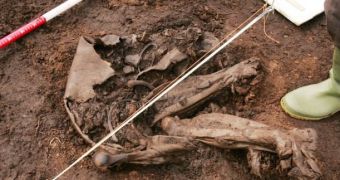Archaeologists have recently reached the conclusion that a mummified body discovered in Ireland is roughly 4,000 years old.
This means these human remains predate those of Egyptian pharaoh Tutankhamun by at least 700 years, and are some of the oldest to have ever been discovered anywhere in the world.
Information shared with the public says that the mummified remains belong to a relatively young man who lived and died sometime during the later Iron Age.
The researchers who have had the chance to examine the young man's mummified body say that, all things considered, it is likely that he was killed during a ritual sacrifice.
Thus, it appears that the man had sustained several cuts to his back not long before he died.
Specialists suspect that the cuts had been purposely made by someone using a fairly sharp blade.
What's more, one of the man's arms was broken at the time of his death, Daily Mail informs us. It is possible that the broken arm was the result of a deliberate attack and not an accident.
“It seems to be same type of ritual that we’ve observed in later Iron Age finds. What’s surprising here is that it’s so much earlier,” specialist Eamonn Kelly reportedly told the press.
Given the fact that the ancient body was partly destroyed by a milling machine when it was discovered, researchers are unable to say whether or not the man had suffered any injuries to his head, neck or chest shortly before dying.
The same source informs us that, when archaeologists discovered the mummy, the latter was sitting in a crouched position. Furthermore, it was covered in peat, and wooden stakes were lying nearby.
The young man's remains were discovered in a bog in County Laois, Ireland back in 2011. Specialists plan to conduct further tests and learn more about this young man's life.
Needless to say, they also wish to shed more light on the circumstances surrounding his death.

 14 DAY TRIAL //
14 DAY TRIAL //